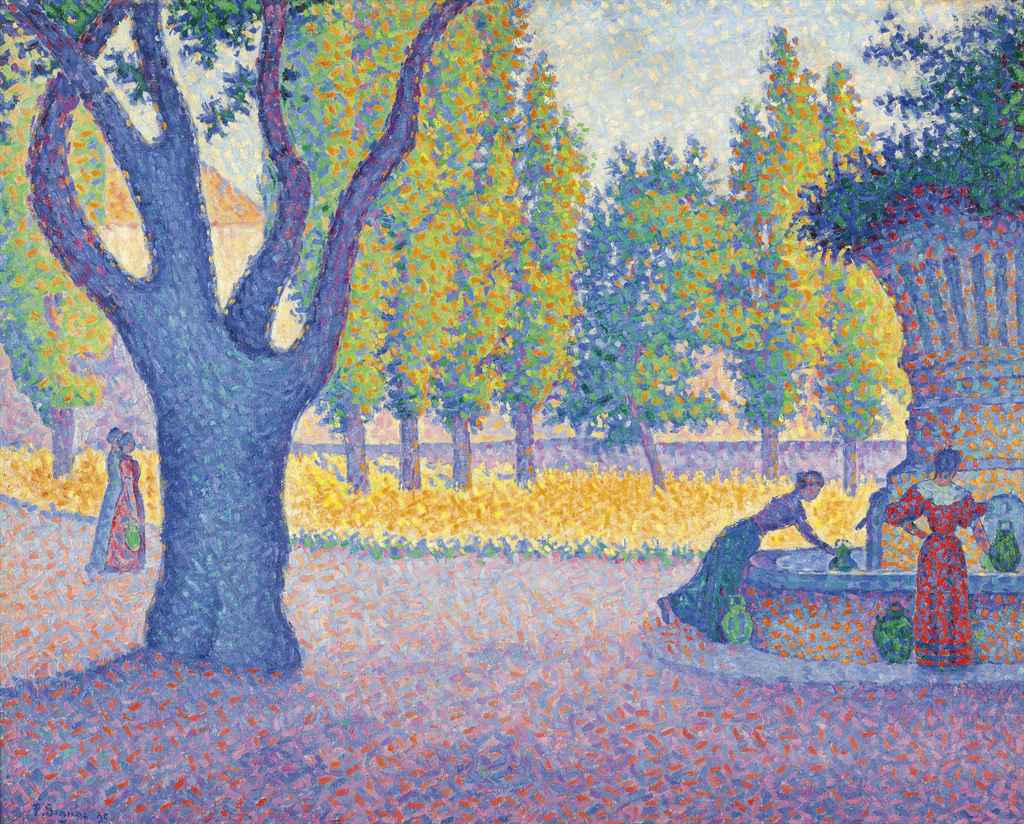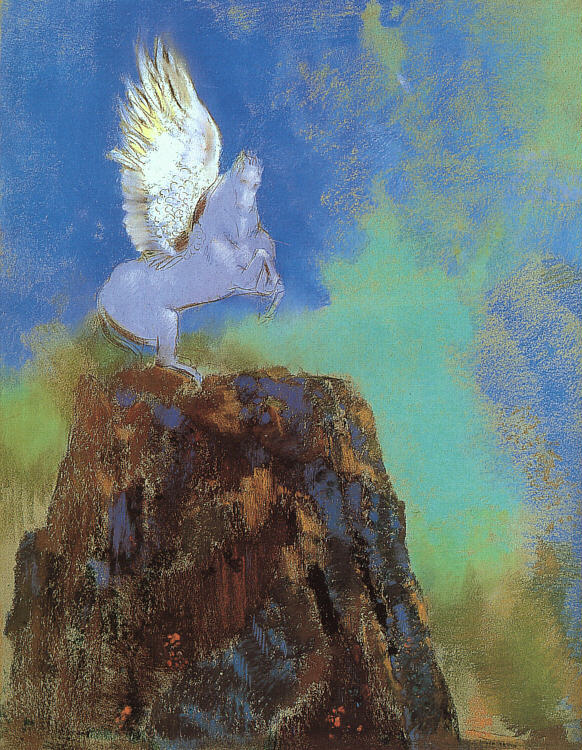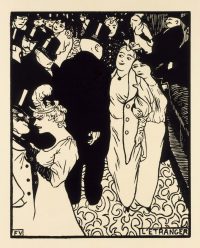The Guggenheim Museum Bilbao
May 12–September 17, 2017
The Guggenheim Museum Bilbao is pleased to present Paris, Fin de Siècle: Signac, Redon, Toulouse-Lautrec, and Their Contemporaries, an exhibition that analyzes the Parisian art scene, underscoring the most important French avant-gardes of the late 19th century, particularly the Neo- Impressionists, Symbolists, and Nabis. The leading exponents of these movements are represented in the show by approximately 125 paintings, pastels, drawings, and prints.
Fin-de-siècle Paris was a time and place of political upheaval and cultural transformation, during which sustained economic crisis and social problems spurred the rise of radical left-wing groups and an attendant backlash of conservatism that plagued France throughout the late 1890s. In 1894, President Sadi Carnot fell victim to an anarchist assassination, while the nationally divisive Dreyfus Affair began with the unlawful conviction for treason of Alfred Dreyfus, an officer of Alsatian and Jewish descent. Such events exposed France’s social and political polarization: bourgeois and bohemian, conservative and radical, Catholic and anticlerical, anti-republican and anarchist.
Mirroring the facets of an anxious, unsettled era, this period witnessed a spectrum of artistic movements. By the late 1880s, a generation of artists had emerged that included Neo- Impressionists, Symbolists, and Nabis. Their subject matter remained largely the same as that of their still-active Impressionist forebears: landscapes, the modern city, and leisure-time activities. However, the treatment of these familiar subjects shifted and these scenes were joined by introspective, fantastical visions and stark portrayals of social life.
Surveyed together, the idioms of this tumultuous decade map a complex terrain of divergent aesthetic and philosophical theories, while charting the destabilizing events at the brink of a new century.
OVERVIEW OF THE EXHIBITION
Gallery 305: Neo-Impressionism
The Neo-Impressionists debuted as an entity in a gallery of the Eighth (and last) Impressionist Exhibition in Paris in 1886, led by Georges Seurat. That same year, Félix Fénéon, an art critic and champion of these artists, coined the term “Neo-Impressionism” in a review. When Seurat died at an early age, Paul Signac took his place as the leader and theorist of the movement.
The principal Neo-Impressionists—Henri-Edmond Cross, Maximilien Luce, Seurat, and Signac—were joined by the former Impressionist Camille Pissarro as well as other like-minded artists, such as Belgian painter Théo van Rysselberghe, from nearby countries. These vanguard painters looked to scientific theories of color and perception to create visual effects in Pointillist canvases, inspired by the optical and chromatic methods developed by scientists.
The theories of French chemist Michel-Eugène Chevreul set out in the Principles of Harmony and Contrast of Colors, and Their Application to the Arts (in French, De la loi du contraste simultané des couleurs et de l’assortiment des objets colorés, 1839) and American physicist Ogden Rood in Modern Chromatics (1879) were particularly influential.
This modern, revolutionary painting technique was characterized by the juxtaposition of individual strokes of pigment to evince the appearance of an intense single hue. By thus orchestrating complementary colors and employing mellifluous forms, the Neo-Impressionists rendered unified compositions. The representation of light as it impacted color when refracted by water, filtered through atmospheric conditions, or rippled across a field was a dominant concern in their works.
Most of the Neo-Impressionists shared left-wing political views, evident, for example, in Pissarro’s and Luce’s depictions of the working classes. The idealized visions of anarcho-socialism or anarcho- communism were also manifest in the utopian scenes that the Neo-Impressionists frequently represented in their works, which often married ideological content and technical theory. But even when not guided by political objectives, the Neo-Impressionists’ shimmering interpretations of city, suburb, seaside, or countryside reflected a formal quest for harmony.
Gallery 306: Symbolism
Symbolism began as a literary movement in the 1880s and its principles were codified in 1886 when poet Jean Moréas published the “Symbolist Manifesto” in the French newspaper Le Figaro. But the idealist philosophies and highly stylized formal qualities of the idiom quickly infiltrated the visual arts. The term "Symbolism" is applied to a variety of artists who shared anti-naturalistic goals. Sometimes Neo-Impressionist or Nabis works were identified with Symbolism because of their peculiar forms and allusive subject matter, such as those by Maurice Denis, who looked to religion and allegory and used sinuous lines and flattened zones of color or all-over patterning. Indeed, artists associated with Symbolism did not always define themselves as such. One of the most important was Odilon Redon, although his eerie noirs of floating, disembodied heads, creeping spiders, and scenes unmoored from reality, their meaning enigmatic and locked in hermeticism, are closely associated with the Symbolist style.
Most of the artists connected to Symbolism were averse to materialism and had lost faith in science, which had failed to alleviate the ills of modern society. They chose instead to probe spiritualism and altered states of mind, believing in the power of evocative, dreamlike images. Decorative idioms, nourished by Art Nouveau’s organic motifs and arabesque forms, permeated their work.
Symbolist art embraced mythic narratives, religious themes, and the macabre world of nightmares, abandoning the factual for the fantastic, the exterior world for the drama of psychological landscapes, the material for the spiritual, and the concrete for the ethereal. Although deeply rooted in narrative, Symbolism sought to elicit abstracted sensations and, through subjective imagery, to convey universal experience. These impulses responded to a yearning engendered by the dark side of modernity—the search for the transcendent.
Gallery 307: The Nabis and the Print Culture in the 1890s
Following the 1890 exhibition of Japanese prints at the École des Beaux-Arts, printmaking experienced a renaissance in France, both in lithography and woodcut. This revival was launched primarily by the Nabis, along with artist Henri de Toulouse-Lautrec. The Nabis (from the Hebrew word meaning “prophets”) were a loosely connected brotherhood whose art was influenced by the flat planes of color and pattern of Paul Gauguin’s Synthetism and by the abrupt cropping and two- dimensional compositions of Japanese prints. Renouncing easel painting, the Nabis’ work crossed media to prints, posters, and illustrations for journals such as La Revue blanche, co-owned by their patron Thadée Natanson.
As a “low” art exempt from the academic rules that governed painting, printmaking offered an artistic freedom that many found attractive. During the 1890s artists experimented with the possibilities of the stark contrasts of the woodcut, as Félix Vallotton did with his inventive use of black-and-white in scathing commentaries on Parisian society. Other Nabis, like Pierre Bonnard and Édouard Vuillard, were enthralled with color lithography and tested the limits of the medium inmyriad ways, even introducing manipulations during the printing process, by working closely with master printer Auguste Clot. They produced posters and print portfolios commissioned by dealers, perhaps most importantly gallerist Ambroise Vollard.
Toulouse-Lautrec turned his energies to the art of the poster, creating highly reductive yet incisive scenes of city life. These large-scale, eye-catching, brilliant creations were short-lived advertisements pasted along the streets of Paris. Passers-by (potential consumers) were inevitably seduced by exciting caricature-like portrayals of the bohemian venues they advertised: the café- concerts of Montmartre or the famed performers who headlined there, including La Goulue (the glutton) and Jane Avril. The lively, often unconventional existence celebrated in these prints and posters came to define fin-de-siècle Paris.
Pierre Bonnard
The Little Laundry Girl (La petite blanchisseuse), 1896 Color lithograph
29.3 x 19.6 cm (11 9/16 x 7 11/16 inches)
Private collection
©Pierre Bonnard, VEGAP, Bilbao, 2017
Henri-Edmond Cross
The Promenade or The Cypresses (La Promenade or Les cyprès) 1897
Color lithograph
image: 28.3 x 41 cm (11 1/8 x 16 1/8 inches)
sheet: 43 x 56.8 cm (16 15/16 x 22 3/8 inches) Private collection
Maurice Denis
April (The Anemones) (Avril [Les anémones]), 1891 Oil on canvas
65 x 78 cm (25 9/16 x 30 11/16 inches)
Private collection
©Maurice Denis, VEGAP, Bilbao, 2017
Camille Pissarro
The Delafolie Brickyard at Éragny (La Briqueterie Delafolie à Éragny), 1886-88
Oil on canvas
58 x 72 cm (22 13/16 x 28 3/8 inches)
Private collection
Achille Laugé
The Flowering Tree (L'arbre en fleur), 1893 Oil on canvas
59.4 x 49.2 cm (23 3/8 x 19 3/8 inches) Private collection
©Achille Laugé, VEGAP, Bilbao, 2017
Maximilien Luce
View of London (Cannon Street) (Vue de Londres [Cannon Street]) 1893
Oil on canvas
65 x 81 cm (25 9/16 x 31 7/8 inches)
Private collection
©Maximilien Luce, VEGAP, Bilbao, 2017
Paul Signac
Saint-Tropez, Fontaine des Lices, 1895 Oil on canvas
65 x 81 cm (25 9/16 x 31 7/8 inches) Private collection
Théophile-Alexandre Steinlen
The Very Illustrious Company of the Chat Noir (La très illustre Compagnie du Chat Noir), 1896
Lithograph
62 x 39.5 cm (24 7/16 x 15 9/16 inches)
Private collection
Henri de Toulouse-Lautrec
Jane Avril, 1899
Color lithograph
55.5 x 37.9 cm (21 7/8 x 14 15/16 inches) Private collection
Paul Ranson
The Young Girl and Death (La jeune fille et la mort), 1894 Graphite and charcoal on paper
55.2 x 33 cm (21 3⁄4 x 13 inches)
Private collection
Odilon Redon
Pegasus (Pégase), Ca. 1895-1900 Pastel on paper
67.4 x 48.7 cm (2 9/16 x 19 3/16 inches) Private collection
Théo Van Rysselberghe
Kalf Mill in Knokke or Windmill in Flanders (Le Moulin du Kalf à Knokke or Moulin en Flandre]), 1894
Oil on canvas
80 x 70 cm (31 1/2 x 27 9/16 inches)
Private collection
Félix Valloton
The Stranger (L ́étranger), 1894 Woodcut on paper
22.4 x 17.9 cm (8 13/16 x 7 1/16 inches) Private collection
Georges Seurat
Caretaker (Concierge), 1884 conté crayon on paper
32.3 x 24.5 cm,
Private collection
Édouard Vuillard
Bécane, 1894
color lithograph
80 x 60.5 cm
Private collection
©Édouard Vuillard, VEGAP, Bilbao, 2017







_1899.jpg)





